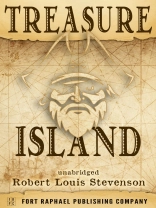‘Treasure Island’ was the first — and perhaps the most successful — of Robert Louis Stevenson’s many works of long-form fiction and forever stamped into the public consciousness the names of Jim Hawkins, Squire Trelawney and, of course, the infamous buccaneer Long John Silver.
An unmatched tale of adventure, greed and heart-pounding suspense, ‘Treasure Island’ follows young Jim as he encounters one piratical character after another, eventually embarking on a search for buried treasure that will take him halfway round the world as he and his companions hunt for the elusive pile of gold secreted away by the infamous and cruel pirate, Captain Flint.
Long hailed as one of the greatest adventure stories ever created, Robert Louis Stevenson’s ‘Treasure Island’ has been adapted into countless stage and screen adaptations and is here presented — along with a biography of the author — in it’s original, unabridged form.
Об авторе
Robert Louis Stevenson (born Robert Lewis Balfour Stevenson on November 13, 1850) was a Scottish author, poet and travel writer who created some of the greatest works of adventure of the 19th century, including Treasure Island, Kidnapped and The Strange Case of Dr. Jekyll and Mr. Hyde as well as A Child’s Garden of Verses, an illustrated book of poetry for children.
Stevenson was an only child, born into a family with a long history of designing and engineering lighthouses, and despite suffering from severe health and respiratory conditions his entire life, managed to travel the globe (in defiance of his doctors’ wishes).
Studying both engineering and law, Stevenson rejected both and began to write about his travels instead, eventually trying his hand at fiction, penning several collections of short stories. He finally had his first real success with Treasure Island in 1883, followed swiftly by The Strange Case of Dr. Jekyll and Mr. Hyde and Kidnapped (both published in 1886).
Married to Fanny Van de Grift Osbourne, Stevenson eventually settled with her on a large farm in the island of Samoa where he would die, quite suddenly, of a cerebral hemorrhage in 1894 at the age of forty-four.
The Samoan people, who dearly loved Stevenson, buried him on Mount Vaea in Samoa on a spot overlooking the sea and turned his house into a museum which still exists today.












